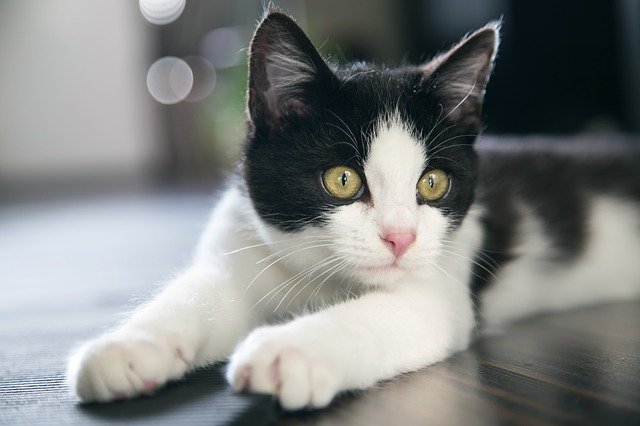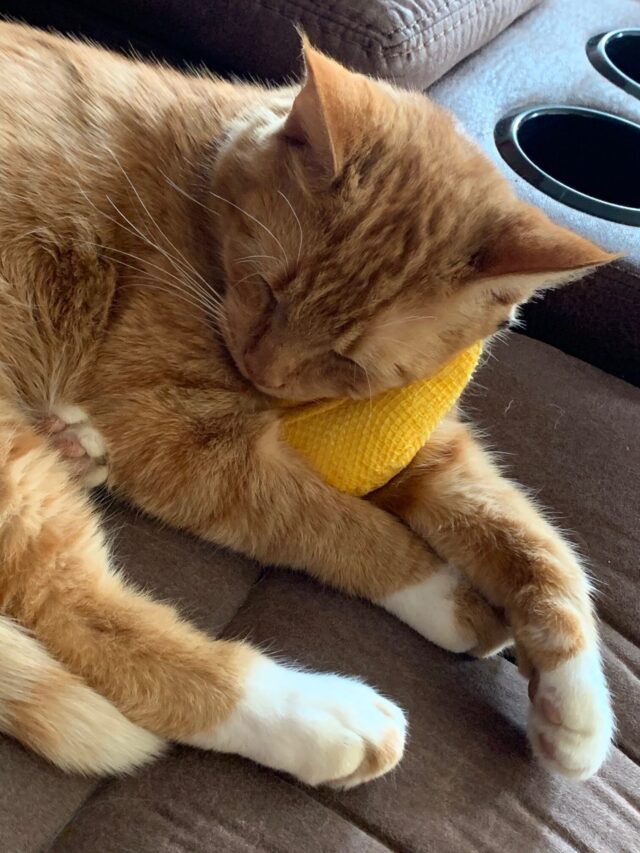As a young cat lover, my favorite book was Socks by Beverly Cleary. The gray tabby of the Bricker family was aptly named as his paws were indeed socked in white fur. Ever since then, I’ve gravitated toward cats with white paws. Ok, honestly, I gravitate to all cats, but since I read the tale of the socked tabby cat, white-pawed kitties have had my heart.
And it seems there’s an explanation for a cat lover’s fondness of cats with white paws. The reason stems back 10,000 years ago to when cats and humans began their coexistence.
Leslie Lyons, professor emerita and head of the Feline Genetics Laboratory at the University of Missouri College of Veterinary Medicine, said, “As humans became farmers and started staying in one place, they had grain stores and refuse piles” and with grain storage and garbage came rodents.
The wild cats that roamed about settling civilizations ate these grain gobblers. People decided these rat-catchers would make great companions, just like the dogs who’d found their wild beginnings too. As wild cats domesticated into kitty dears, certain traits grew more and more prevalent through the ages, according to Lyons. White paws were one such characteristic.
Ancient Cat Lovers Were Silly for Socked Paws Too
White paws were not often seen in the wild cats of old as the Felis silvestris was designed to blend in with surroundings. The small predator used camouflage to survive and hunt. But, as Lyons reports, “Genetic mutations are occurring all the time.”
So bright, white feet wouldn’t help a feline on the hunt stay hidden.
However, it seems cat lovers of long ago found cats in socks just as cute as we do today.
“There were probably people saying, ‘I particularly like that kitten because it has white feet. Let’s make sure it survives,'” said Lyons.
Sounds about right!
Lyons also points out the calmest animals were probably selected over cats remaining too wild in their behavior. And for some reason yet unknown to science, “white spots tend to appear when the tamest individuals are selected and bred”. Several species of animals domesticated by humankind exhibit this correlation of calm behavior and white feet as well.
So, let’s pay attention to our cats in socks. Are they calmer than their dark-pawed counterparts?
How do Paws Get Their Socks
Genetics is a technical game, but basically, cats get their white paws when certain cells don’t spread all the way to the feet when kittens are just developing embryos.
Lyon explains the neural crest cells responsible for the color in cat fur originate from the region that develops as the back. The cells then travel body-wide to give feline coats their patched, striped, or solid fur. If these neural crest cells don’t move far enough down the legs, then a kitty winds up with white paws.
Next time you’re planting kisses on your cat’s socked paws, explain how those cute white toes descended from a long-ago ancestor who found their forever home thanks to their white-gloved paws.
FAQ: White-Pawed Cats with Sock Feet
Q: Are white paws in cats a sign of domestication?
Yes! Research suggests that white paws—and other white markings—are more common in domesticated cats. These markings may be linked to selection for tameness over generations.
Q: Do cats with white paws behave differently than others?
Possibly. While not all white-pawed cats are calm, some studies indicate that white markings may appear more frequently in calmer, more docile animals selected during the domestication process.
Q: Why don’t wild cats have white paws?
Wild cats need to blend into their environment to hunt and survive. White markings would make them more visible, so natural selection favored solid, camouflaging colors.
Q: How do cats get white paws genetically?
It’s due to how pigment-producing cells (neural crest cells) spread during early development. If these cells don’t reach the ends of the legs, the result is white paws.
Q: Can any cat breed have white paws?
Yes. White paws can appear in many breeds and mixed-breed cats. It’s more about genetic expression than breed specificity.
H/T: www.livescience.com








